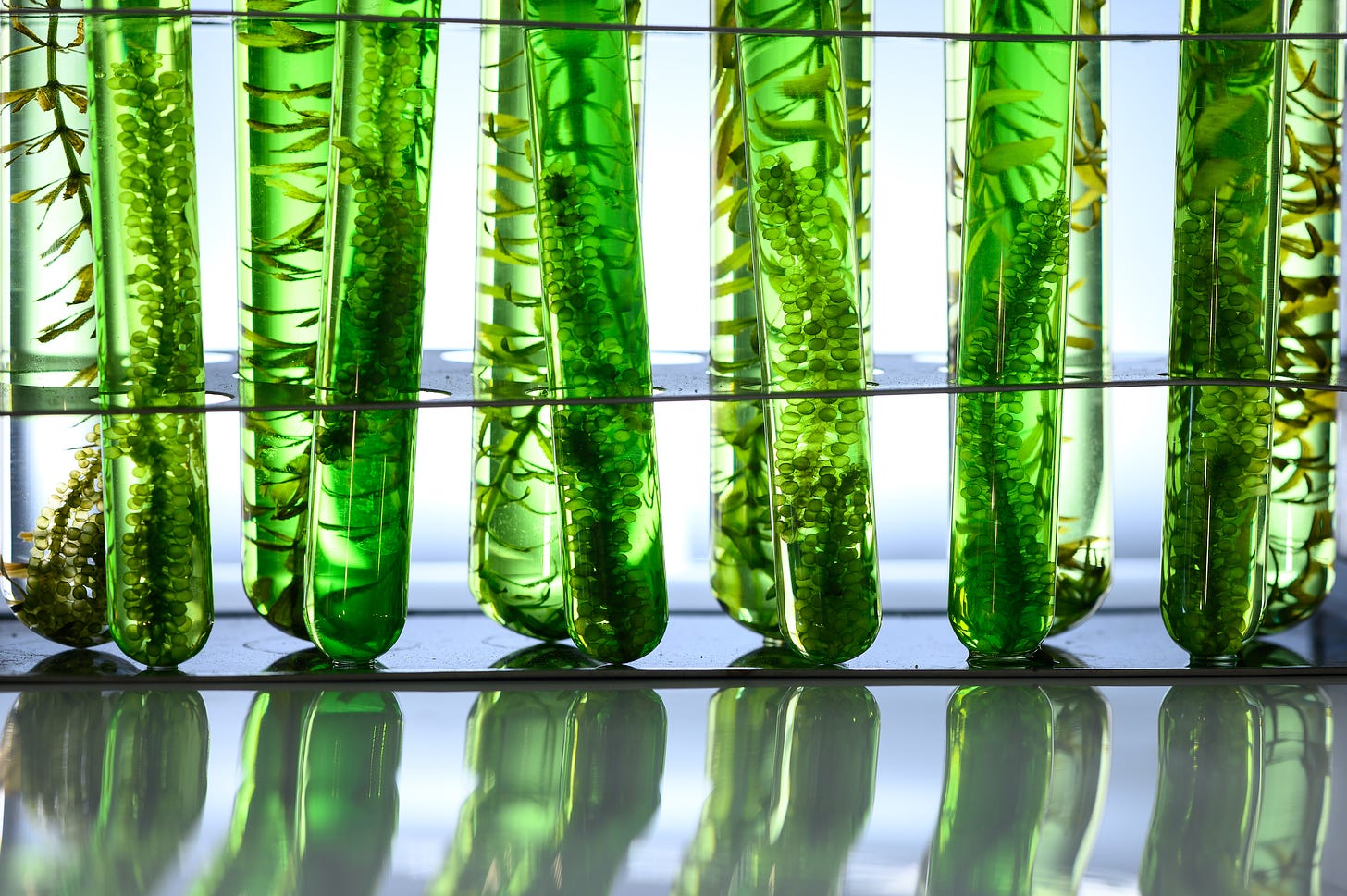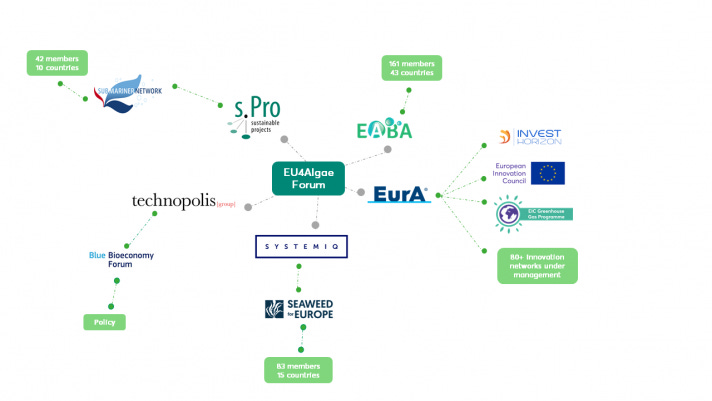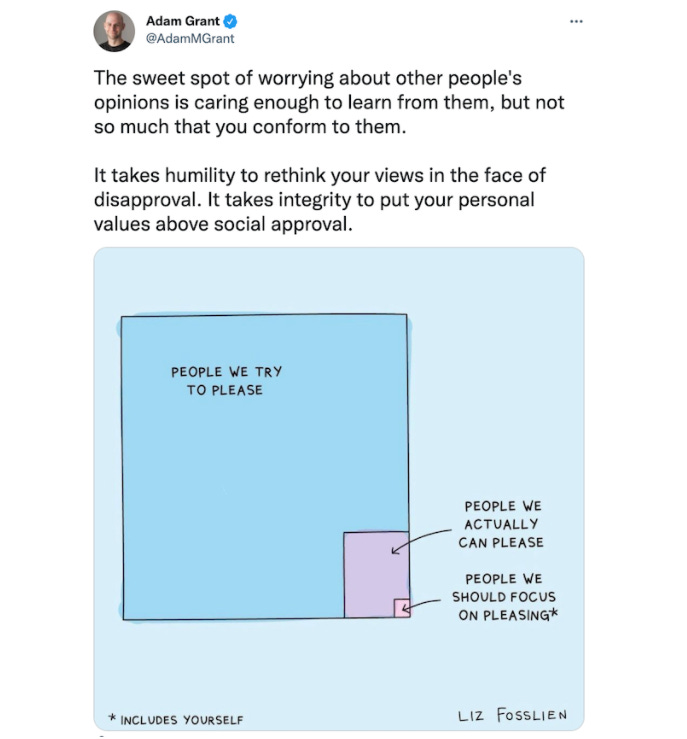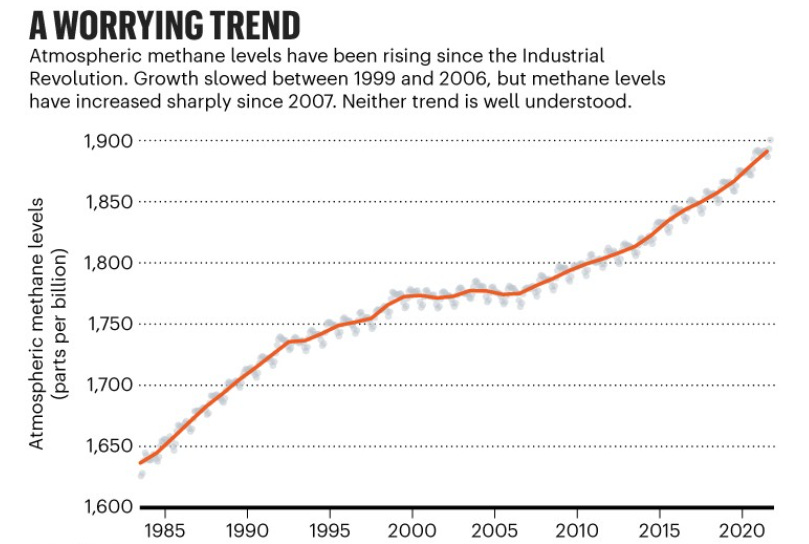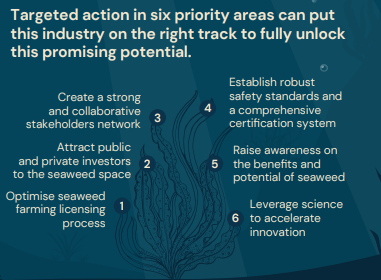GOOD day amigos: Hoorah as algae-tech slips into the space-suit
The Paxtier report 09/02/22: Featuring climate market updates, our Investible chat and Volta Greentech on the rise.
“Keep your face always toward the sunshine, and shadows will fall behind you.”
— Walt Whitman
Hello and welcome to Paxtier’s weekly roundup for Wednesday, February 09, 2022! This week we breakdown the Seaweed for Europe manifesto, bring you the latest updates in algae-tech, and sit down with the one and only Patrick Sieb from Investible.
Climate markets
Money continued to flow into climate-tech ventures this week as the “Green Olympics” in Beijing kicked off and Lightsmith Group announced the final closing of its Lightsmith Climate Resilience Partners, having raised $186m. Notable investments included the funding of energy-efficiency startup Allumia, Superpedestrian raising $125m to create AI for ultra-safe scooters, Novi Connect (the B2B marketplace for sustainable ingredients) raising $40m, and Verdox raising $80m for their electric carbon capture and removal tech. Quite brilliantly, the USDA decided to commit $1 billion over the next year into “climate-smart” farming, and the EU announced “Chips for Europe”, an €11 billion R&D partnership to boost research, development and manufacturing of microprocessors. Despite these highlights, the positive headlines were somewhat dampened by failures in the corporate world, as research indicated the world’s biggest firms were failing over their net-zero claims.
When it comes specifically to algae, the news remains extremely positive. Impressive updates included the creation of EU4Algae, a platform designed to accelerate the development of a European algae industry, and Volta Greentech’s seaweed supplements getting the green-light.
Paxtier’s Top 4
Algae for breathing on mars
Kara Gaiser has spent time recently developing a novel and more resource-sustainable system that utilizes in-situ Martian carbon dioxide to create oxygen. Her solution revolves around our dear pal: microalgae. She undertook this work after realising that oxygen production using status-quo electrolysis on Mars would be highly inefficient. In her report, she discusses the design process, findings, optimal parameters, and current experimentation that will lead to prototype development.
This follows comments from microalgae experts on the adaptability of microalgal production systems for Mars. CEO of Sophie’s BioNutrients, Eugene Wang has been particularly optimistic about using microalgal fermentation technology on the red planet, not (too) long after John Burlew made similar predictions (check out his book summary here.)
Volta Greentech making waves
Volta Greentech, the swedish startup developing methane-reducing seaweed supplements have gone all-out this week. They are now gearing up to build a full-scale factory to produce seaweed supplements based on their Asparagopsis Taxiformis seaweed. This follows the success of their pilot study at a Swedish beef farm. The investigation concerned the effectiveness of their supplement which, when fed to cows, ended up cutting average methane emissions burped out by the animals by more than 80%. The new production plant will have a capacity of 50 tons a year to feed between 3000 to 5000 animals.
Rare earth metals in brown seaweed
This week, Ryabushko et al. documented the variety of rare earth metals found in brown algae. The abundance of rare earth elements including scandium (Sc), yttrium (Y), lanthanum (La) and 14 lanthanides in the algae, seawater and sediments were determined using inductively coupled plasma mass spectrometry. The investigation sought to assess environmental impacts brought about by using rare earth metals in technologies which can later pollute oceans. The results show that branchlets from brown seaweeds of the species Cystoseira spp. accumulate many of these rare earth elements as they age… who knows, perhaps we’ll see these scandium-rich seaweeds being harvested for use in cricket bats someday soon…
European Commission launches platform to promote production and use of algae in Europe
Say hello to the new kids on the block. This week a consortium of sustainability consultants and algae organisations announced the launching of a European algae stakeholder platform, called EU4Algae. The aim of the platform is to accelerate the development of a European algae industry by encouraging collaboration among European algae stakeholders including algae farmers, producers, sellers, consumers, technology developers, investors and more.
The collaboration platform will be online by the summer 2022:
More algae-tech in the news
Microalgae protein patents in the works: People are turning to microalgae protein, and this week new patents in the space went public. Recent patent development in this area largely revolves around creating neutral-tasting algal biomass.
Algae bioenergy gets a thumbs up: Research indicates that algae-based bioenergy production aligns with the Paris agreement goals as a carbon mitigation technology.
This week the town of Brest in France hosts the One Ocean Summit : This is the first international summit dedicated to protecting the world’s oceans. It looks like marine algae will be getting a thorough promotion from the likes of Philippe Potin and Vincent Doumeizel, part of the team behind the Safe Seaweed Coalition, a new organisation managed by the United Nations, the French National Centre for Scientific Research and the Lloyd’s Register Foundation.
Seaweed for Africa: Africa’s much-touted blue economy is primed for growth as the continent’s coastal and island nations tap into marine biotechnology and molecular aquaculture to support renewable energy, pharmaceuticals and other products. Seaweed is at the forefront of their efforts.
How’s that for a Pembrokeshire community aiming to become the first commercial seaweed farm in Wales: The people of Câr-y-Môr in St Davids are taking climate-action to a new level in this secluded spot.
The mission to establish algae and seaweed biotechnology in Saudi Arabia: KAUST look to algae and seaweed biotech to boost Saudi Arabia fisheries.
Research shows that Algal blooms are becoming more prevalent: The most pronounced increases were found in Asia and Africa, mostly in developing countries that remain reliant on agricultural fertilizer.
Installing algae panels DIY:
Top notch
Tweets of the week:
Worth a listen this week:
In depth with Peter Green
Breaking down Seaweed for Europe
In 2020, a team came together to publish “Hidden champion of the ocean", a report highlighting the future of the seaweed market in Europe. In this fantastic study, the researchers gathered extensive data around marine algae in Europe, before creating guidelines for developing the sector. What we loved most about this report was its collaborative nature. At the time of writing, contributors to the report included over 40 stakeholders including industry associations, investors, farmers, processors, technology providers, academia, and thought leaders. The goal was to elevate the European seaweed profile to the right global audiences, and in doing so, encourage the development of this nascent European sector.
So… what did they find?
Of the key findings, the most impressive stat relates to their market forecast. According to their model, European demand for seaweed products is projected to reach €3.0- 9.3 billion in 2030, based on tallying the total potential market value of the eight clearly documented product segments we can get from seaweed: food products, food additives, animal feed, biostimulants, pharmaceuticals/ nutraceuticals, cosmetics, bio-packaging and biofuels. Impressively, at the upper end, this would theoretically create more value than total EU aquaculture production in 2017, which came in at €5.1 billion.
Supposedly, much of this demand could be supplied by European farmers. In fact, the report states that €0.9-2.7 billion of the market could be accounted for by domestic producers in 2030, equivalent to 30% of total European demand. That's due to the fact seaweed growing conditions in Europe are quite favourable. This would shift a lot of supply away from Asian producers, resulting in a shortening of supply chains which would greatly enhance the sustainability of the space.
In terms of biggest opportunities, animal feed supplements are expected to be the largest market for the European sector. The total market value of said products is expected to fall between €540-2,220 million driven, in part, by livestock farmers seeking naturally- sourced, productivity enhancing, and methane-reducing additives to improve the quality and emissions of their produce. This comes at a time when scientists repeatedly draw attention toward the ‘dangerously fast’ growth rate in atmospheric methane.
Source NOAA
Conclusion
The report finishes by proposing a roadmap. This outlines how we can put the industry on the right track in Europe and revolves around 5 main points.
We need to significantly increase demand from European nations.
The need to increase production capacity in Europe is clear.
Production costs must be driven down.
It is essential we create cost-efficient and well distributed processing facilities.
There must be an efficient bridge to connect the demand and supply sides.
To support these developments, the following specific “triggers” require prioritisation in the next two years in order to tip the industry towards the right acceleration pathway.
Opinion
Overall, it's a very comprehensive, thorough, relevant study and I’ve mentioned how refreshing I found the collaborative effort to be. However, I do worry about one thing in particular: demand. For example, in the seaweed nutrition space, how well can founders market their seaweed products to steal consumer attention away from equally nutritious, alternative sources of proteins and nutrients?
Another thing that concerns me is the time period. What happens after 2030? When it comes to global trends, how quickly will modern meat consumption continue to change, and how big an impact will that have on the animal feed sector? A study with a slightly longer time horizon would be cool to see.
Chatting with a new $100m climate-tech fund
This week we sat down with the brilliant Patrick Sieb from Investible, who leads the Investible Climate Tech Fund — a $100 million target fund that will back early-stage startups that are contributing to a decarbonised future. In this edited conversation, Patrick spoke about his perspectives on climate-tech, his opinion on algae-tech, and the importance of just getting started. Here are some highlights:
Given how big 2020 and 2021 were for climate-tech, what's your perspective on the space in 2022 ?
“I think it's a super exciting time and, most importantly, it’s not hype. I don't think this thematic of climate-tech is going to be at major risk from fluctuations in other areas like SPACs. There are some real fundamentals here including the fact we need solutions for climate right now. Plenty of people have realised this and there is an abundance of capital from corporates waiting to be invested.
I'm bullish on the front-end, where we're seeing many more individuals involved in innovating. Now it's all about scaling, getting people on the right path, and helping founders grow these startups to the point bigger investors will deploy hundreds of millions of dollars.”
What’s your opinion on the algae for climate-tech space and what challenges exist for enterprises in that area?
“I've seen quite a number of companies looking to either grow seaweed or use seaweed-derived products. As a thematic, it's a super interesting space with a lot of potential. Some particularly impressive facets include its dramatically fast growth rate, and how it can be used to replace certain fossil fuel derived products like plastics. It’s quite clearly an underutilised resource.”
What advice or resources might you give to people who are just starting out on their journey with sustainability focussed businesses or investments?
“I think a lot of people go into climate unsure of how to approach such a big problem. One of the resources I found useful is a podcast called My Climate Journey which showcases how someone from an unrelated domain can figure things out in the space.
When it comes down to it, strive to do what you really enjoy, and what you're good at. Then try to apply these things to climate topics. You don't have to be a deep-tech science whizz to make a difference. Using your skills in the right way can be critical.
In terms of resources, I just finished Speed & Scale which was awesome. This book provides a broad overview of the space and it's interesting to hear from somebody who was there during clean tech 1.0. Nevertheless, it's important to note that you don't even have to read much if you want to make a difference in this space. At the very least, research the fundamentals, and try to focus your energy on higher impact projects.”
A quality moment in the Winter Olympics this week came from veteran Jacobellis in snowboard cross:
Sadio Mane taking Senegal to the top was a beautiful sight:
Thanks again for joining us this week! Looking forward to seeing you soon.
Best,
Peter
Paxtier






